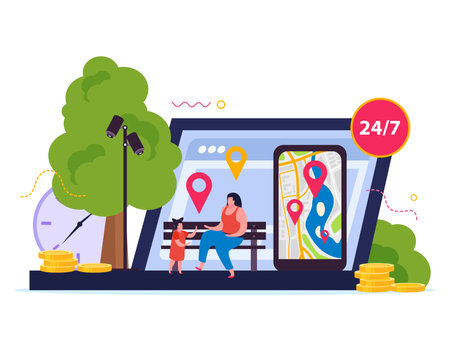Understanding the Indian E-commerce Consumer Landscape
India’s e-commerce market is witnessing exponential growth, driven by a diverse and dynamic consumer base. To design a resource-rich content strategy for mobile apps, it is critical to understand the unique characteristics of Indian shoppers. The demographics present a vast spectrum—while urban India boasts tech-savvy millennials and Gen Z consumers with high purchasing power, rural areas are emerging as the next frontier, with increasing internet penetration and smartphone adoption.
Urban-Rural Divide: Opportunity and Challenge
The urban-rural divide is pronounced in India’s digital landscape. Urban consumers are accustomed to seamless online experiences, expecting localized offers, quick deliveries, and multi-channel customer support. In contrast, rural shoppers often face infrastructural challenges but are becoming increasingly comfortable with mobile-first e-commerce due to affordable smartphones and low-cost data plans. Crafting content that addresses both segments’ needs is crucial for app-based retailers aiming for pan-India reach.
Language Diversity Drives Engagement
India’s linguistic diversity plays a pivotal role in shaping content strategies. While English remains dominant among urban elites, Hindi and regional languages such as Tamil, Telugu, Bengali, and Marathi are essential for connecting with non-metro audiences. According to industry reports, over 70% of new internet users prefer vernacular content, underscoring the need for multilingual resources in e-commerce apps.
Mobile-First Behaviours: The New Normal
With over 800 million smartphone users in India, mobile is the primary gateway to online shopping. Consumers expect intuitive interfaces, fast-loading pages, and content formats optimized for smaller screens—such as videos, infographics, and voice search. Understanding these mobile-first behaviours allows brands to craft content experiences that are not only informative but also engaging and easy to navigate on-the-go.
By deeply analysing these demographic factors, language preferences, and usage patterns, e-commerce app strategists can build resource-rich content that resonates across India’s multifaceted consumer landscape—laying the foundation for sustained engagement and conversion.
Localising Content for Diverse Indian Audiences
E-commerce mobile apps in India must prioritise localisation strategies to connect meaningfully with the country’s vast and diverse user base. With over 22 official languages and hundreds of dialects, adapting content to resonate with regional audiences is not just a value-add—it is a necessity for driving engagement and conversion.
Adapting Content with Regional Languages
India’s digital consumers span urban metros to rural towns, each with distinct linguistic preferences. Offering app interfaces, product descriptions, and push notifications in multiple Indian languages—such as Hindi, Tamil, Telugu, Bengali, and Marathi—can significantly broaden your reach. According to KPMG & Google (2021), 90% of new internet users in India prefer content in their native language. The table below illustrates popular regional languages and their primary regions:
| Language | Primary Regions | User Penetration (%) |
|---|---|---|
| Hindi | North & Central India | 41% |
| Tamil | Tamil Nadu, Puducherry | 6% |
| Bengali | West Bengal, Tripura | 8% |
| Telugu | Andhra Pradesh, Telangana | 7% |
| Marathi | Maharashtra, Goa | 7% |
Cultural References: Building Trust & Relevance
Cultural nuances play a pivotal role in content strategy. Incorporating local festivals, traditions, and references—such as Diwali offers in the North or Pongal discounts in the South—demonstrates cultural awareness and builds authentic brand trust. Users are more likely to engage with brands that acknowledge their heritage and celebrate along with them.
Festival-centric Campaigns for User Engagement
Festival-based campaigns are proven drivers of traffic and sales for Indian e-commerce apps. Here’s how brands can leverage these occasions:
- Customised Landing Pages: Feature festival-specific themes and collections (e.g., ethnic wear during Navratri or electronics deals during Dussehra).
- Limited-Time Offers: Introduce flash sales aligned with regional holidays to create urgency.
- User-Generated Content: Encourage users to share festival moments using branded hashtags for community engagement.
- Loyalty Rewards: Offer bonus points or cashback on purchases made during key festivals like Eid or Onam.
Key Takeaway for E-commerce Mobile Apps in India
A resource-rich content strategy tailored for India requires dynamic localisation through regional languages, relatable cultural touchpoints, and festival-driven campaigns. These tactics foster trust, improve retention rates, and ensure sustained relevance across the nation’s multifaceted consumer segments.

3. Utilising Rich Media and Interactive Content
Driving Engagement through Videos
In the context of Indias diverse e-commerce landscape, integrating high-quality videos into mobile apps has become a game-changer for both product discovery and user retention. Data from RedSeer Consulting indicates that over 75% of Indian internet users prefer video content for learning about new products. Short-form product demos, unboxing experiences, and 360-degree views enable customers to make more informed purchase decisions, reducing return rates while enhancing trust. E-commerce giants like Flipkart and Amazon India have already seen significant upticks in conversion rates by embedding shoppable videos tailored to regional preferences.
Leveraging Vernacular Influencer Endorsements
The Indian digital ecosystem thrives on authenticity and relatability, especially when it comes to influencer marketing. Collaborating with local influencers who communicate in vernacular languages—such as Hindi, Tamil, Telugu, or Bengali—helps brands break down barriers of trust and comprehension. According to a KPMG report, nearly 70% of Indian shoppers feel more connected to content presented in their native language. Featuring endorsements from regional micro-influencers within app interfaces amplifies reach and engagement among Tier II & III city audiences, driving organic growth and brand loyalty.
Enhancing User Experience with Interactive Guides
Interactive guides—such as quizzes, AR try-ons, and chat-based shopping assistants—are fast becoming essential tools for e-commerce apps aiming to differentiate themselves in the Indian market. These features empower users to personalize their shopping journey, discover new categories, and solve doubts instantly. For example, Myntras AR-powered virtual try-on feature led to a 22% increase in session duration among Gen Z shoppers. By gamifying product exploration and offering real-time recommendations in local languages, brands can foster deeper engagement and higher average order values.
Strategic Recommendations
- Integrate localized video content throughout the user journey—from homepages to product detail pages—to drive discovery and conversions.
- Partner with vernacular influencers for campaign-specific app integrations, focusing on authenticity rather than follower count alone.
- Invest in interactive features that support multiple Indian languages and address unique regional shopping behaviors.
Conclusion
A resource-rich content strategy combining videos, vernacular influencer endorsements, and interactive guides is crucial for e-commerce mobile apps targeting India’s vast and varied consumer base. Embracing these elements not only boosts user engagement but also drives sustainable growth by respecting cultural diversity and evolving digital consumption habits.
4. Leveraging Data Insights for Personalised Experiences
In India’s dynamic e-commerce landscape, delivering personalised experiences is key to driving engagement and conversions. By leveraging data analytics and artificial intelligence (AI), mobile app businesses can tailor content, recommendations, and communications to align closely with Indian consumer behaviour patterns. Here’s how you can harness these technologies to maximise the impact of your resource-rich content strategy.
Utilising Data Analytics for Hyper-Personalisation
Indian consumers are diverse, with varying preferences based on region, language, age, and shopping habits. Analysing user data—such as browsing history, purchase frequency, payment methods, and preferred brands—allows you to segment audiences more effectively. AI-driven algorithms can then recommend products and offers that are most relevant to each segment.
| Data Source | Personalisation Strategy | Example for Indian Market |
|---|---|---|
| User Browsing & Purchase History | Dynamic Product Recommendations | Suggest trending kurtis or cricket jerseys during festive seasons |
| Regional Language Preferences | App Localisation & Multilingual Content | Offer Hindi, Tamil, Telugu interface options and localised banners |
| Geo-location Data | Location-based Offers & Notifications | Send city-specific deals for Mumbai or Bangalore customers |
| User Engagement Metrics | Custom Push Notifications Timing & Frequency | Optimise notifications around tea breaks or evening hours when users are active |
Localisation: Beyond Translation
Localisation is not just about translating content but adapting it to cultural nuances. AI tools help analyse popular search terms in regional languages and trending local products. Integrate local festivals (Diwali, Pongal), sports events (IPL), and region-specific discounts into your app content calendar. This approach ensures your messaging resonates authentically with users from different states.
Smart Push Notifications Based on Behavioural Triggers
A/B testing of push notifications helps identify which messages drive higher open rates among Indian users. Use AI to determine optimal timing based on past behaviour—such as payday sales or flash deals during lunch breaks. Segment notifications by language and region for greater relevance.
Key Takeaways for E-commerce Apps in India:
- Leverage real-time analytics: Continuously monitor user interactions to update personalisation strategies dynamically.
- Prioritise regional diversity: Use language options and geo-targeted campaigns to build trust and familiarity.
- Enhance engagement: Combine behavioural triggers with contextual push notifications to boost conversion rates.
- Respect privacy: Stay compliant with data protection laws (like India’s Digital Personal Data Protection Act) while collecting and processing user information.
This data-driven approach enables e-commerce mobile apps in India to deliver resource-rich, hyper-personalised experiences that delight customers at every touchpoint.
5. Building Trust with Vernacular Customer Education
Understanding the Indian Digital Consumer
India’s e-commerce ecosystem is witnessing rapid adoption by millions of new-to-digital and first-time users, especially from Tier 2 and Tier 3 cities. According to KPMG, over 70% of India’s internet users prefer browsing in their native language. This highlights the strategic imperative for mobile app platforms to deliver resource-rich content in multiple regional languages, ensuring inclusivity and accessibility.
Onboarding with Local Relevance
Effective onboarding plays a crucial role in building trust among first-time users. By offering step-by-step app guides, explainer videos, and interactive FAQs in local languages such as Hindi, Tamil, Telugu, Bengali, and Marathi, e-commerce apps can minimise friction and increase conversion rates. Localised onboarding content not only demonstrates cultural sensitivity but also empowers users to confidently explore new features.
Simplifying Payment Methods
Digital payment apprehension remains a barrier for many Indian shoppers. Educational content that clearly explains various payment options — including UPI, cash-on-delivery (COD), wallets, and EMI schemes — in vernacular languages builds confidence and reduces drop-offs at checkout. For instance, using familiar analogies or storytelling in regional dialects can demystify complex digital payment processes.
Promoting Safety and Security Awareness
Safety concerns are top-of-mind for new online shoppers. Resource-rich apps proactively educate users about secure password practices, recognising phishing attempts, and safe order tracking through vernacular video tutorials and infographics. This not only enhances user trust but also positions the brand as a responsible digital partner.
Strategy: Hyperlocal Content as a Differentiator
The data clearly shows that tailored vernacular education is a powerful differentiator in the crowded Indian e-commerce market. E-commerce brands that invest in region-specific customer education are more likely to see higher app retention rates, increased transaction frequency, and positive word-of-mouth within local communities.
6. Measuring Content Performance in the Indian Context
Key Performance Indicators (KPIs) for Indian E-commerce Apps
To drive sustainable growth for e-commerce mobile apps in India, it is vital to establish tailored Key Performance Indicators (KPIs) that reflect both user engagement and business objectives. Essential KPIs include:
- User Engagement Metrics: Monitor average session duration, daily active users (DAU), and scroll depth, as Indian users value time-efficient and relevant content.
- Conversion Rate: Track how effectively content guides users from product discovery to purchase, especially during major Indian sale events like Diwali and Big Billion Days.
- Retention Rate: Analyse repeat visits and loyalty program participation, factoring in regional festivals and local shopping habits.
- Content Shareability: Measure how often users share content via WhatsApp, Facebook, or regional platforms—key channels in India’s social commerce ecosystem.
- Regional Language Engagement: Assess performance of vernacular content through language-specific engagement and conversion rates.
Establishing Feedback Loops for Continuous Optimisation
Implementing robust feedback mechanisms ensures your content remains relevant for India’s dynamic user base. Effective feedback loops include:
- User Reviews & Ratings: Integrate prompts within the app to gather direct feedback on content quality and relevance.
- A/B Testing: Regularly test headlines, imagery, and copy in different languages to identify what resonates best with diverse Indian audiences.
- Analytics Dashboards: Use real-time dashboards to visualise regional trends, device usage patterns, and campaign performance at a granular level.
- Social Listening: Track mentions of your brand and content across popular Indian forums like Quora India, Twitter, and local influencers’ pages.
Scaling Content Strategies for Pan-India Growth
The true impact of a resource-rich content strategy is realised when it can be scaled across India’s heterogeneous market. Leverage automation tools to personalise recommendations based on state-wise festivals and shopping patterns. Use data from KPIs and feedback loops to double down on high-performing formats—such as video explainers for Tier 2/3 cities or influencer-led campaigns in metros. Continuously iterate your approach by integrating insights from both quantitative metrics and qualitative user feedback, ensuring sustained growth and market relevance for your e-commerce mobile app in India.


